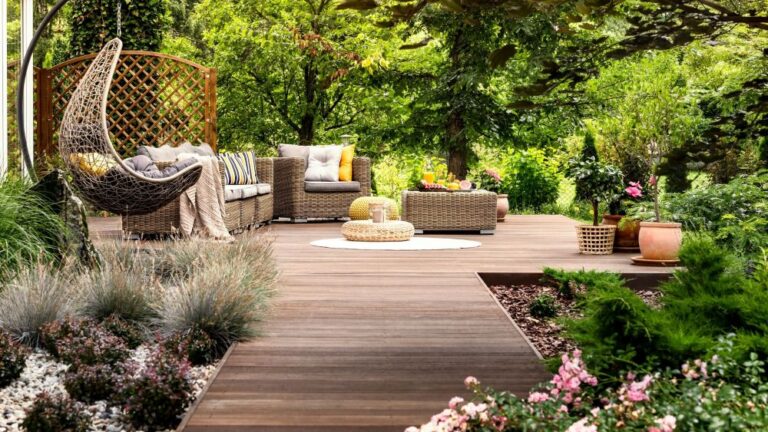Outdoor living spaces have become essential areas for relaxation, creativity, and mental renewal. Spending time outside reduces stress, boosts mood, and encourages a sense of calm.
An inviting outdoor environment encourages connection with nature and provides a peaceful retreat right at home.
A relaxing space depends on thoughtful planning, comfort, and balance between function and aesthetics.
Key ideas include defining purpose, choosing natural elements, and adding comfort features that support well-being.
A personalized outdoor design can transform daily life into a more serene and enjoyable experience.
Define Your Purpose & Plan the Layout
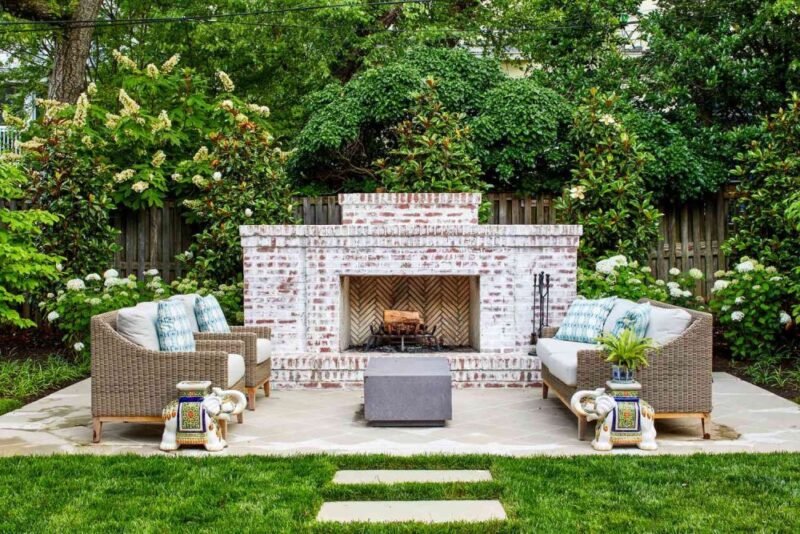
Designing a relaxing outdoor area starts with identifying its purpose.
Clear goals shape how the space functions and influence every design choice afterward.
Families may use it for entertaining guests, while others may prefer quiet mornings with coffee, yoga, or reading under soft sunlight.
Determining the main purpose helps create harmony between lifestyle and design.
Before planning begins, make a list of possible uses to guide decision-making:
- Entertaining guests and hosting gatherings
- Relaxing or meditating in peace
- Family playtime and outdoor meals
- Gardening and growing herbs
- Working remotely in the fresh air
Users also need to play an important role in creating comfort and functionality.
A family with children or pets benefits from sturdy, easy-to-clean surfaces and open areas for play.
Individuals or couples may prefer intimate seating areas surrounded by plants and lighting. Accessibility is equally important for convenience and safety.
Consider key aspects before finalizing a layout:
- Number of people who will use the area regularly
- Presence of children, elderly, or pets
- Accessibility for movement and safety
- Maintenance time and effort
- Connection between indoor and outdoor flow
A practical layout divides the yard into multiple functional zones.
Lounging areas can feature daybeds, recliners, or sectionals under partial shade.
Cooking zones should include grills or outdoor kitchens with proper ventilation and counter space.
Dining zones function best near the indoor kitchen for easy serving. Play zones require visibility and protection, such as soft grass or rubber surfaces.
Smooth transitions between these sections create a cohesive, balanced flow that blends seamlessly with the home’s design.
Add Water and Fire Elements
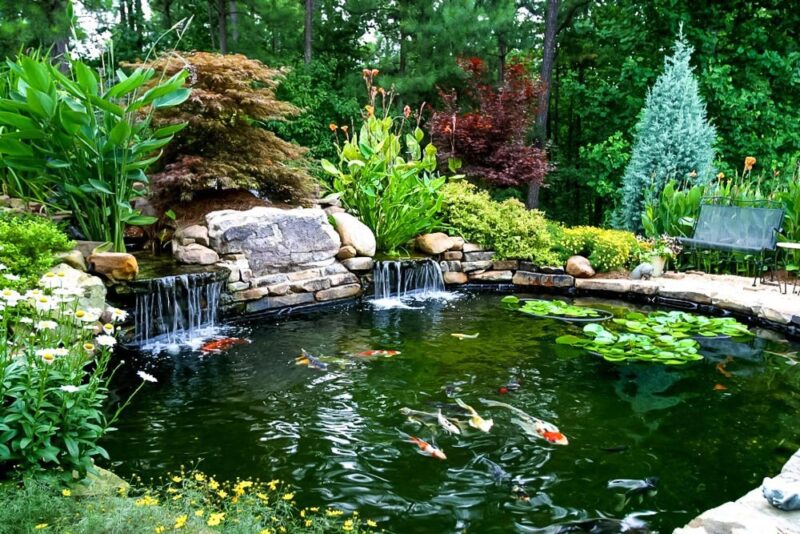
Water and fire bring life and character to any outdoor retreat, engaging multiple senses at once.
Flowing water generates soothing background sound, reducing stress and improving focus.
Fountains, ponds, and bubbling rocks are popular options that vary in scale and cost.
At the same time, equipment like JetStream equipment for lake and pond helps maintain clean, well-circulated water for long-term use and enjoyment.
Consider adding these water features for tranquility:
- Small tabletop fountains for patios
- Garden ponds with aquatic plants and fish
- Wall-mounted water cascades for compact spaces
- Bubbling rocks or urns powered by submersible pumps
Fire features add warmth and visual excitement.
Fire pits create a central gathering spot for storytelling and roasting marshmallows.
Outdoor fireplaces offer architectural elegance and functional heat. Smaller chimineas provide a rustic touch for patios or balconies.
Before installation, plan seating arrangements and safety zones:
- Keep fire pits a safe distance from plants and fabrics
- Use non-flammable materials under and around fire features
- Provide comfortable seating with durable cushions
- Add storage for firewood or protective covers
Combining water and fire establishes balance between movement and stillness, warmth and coolness.
Evening lighting around these features enhances mood and extends usability after sunset.
Together, they create a peaceful yet dynamic ambiance ideal for relaxation and conversation.
Build the Foundation
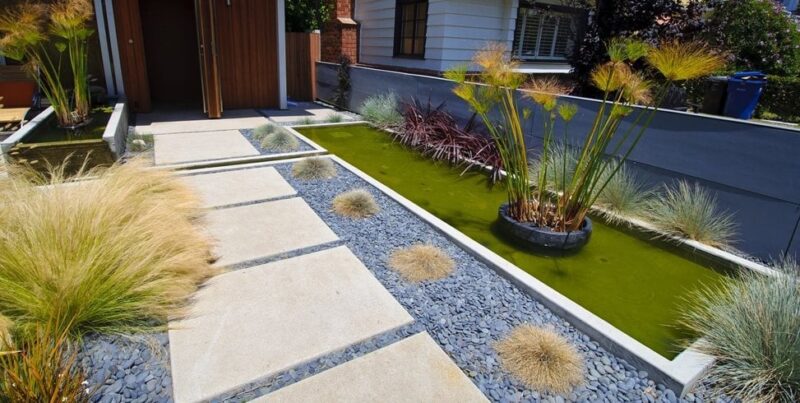
A durable and visually pleasing foundation sets the structure of the outdoor space. Walkways and hardscapes define how people move and interact.
Pavers, natural stone, gravel, or brick give form while blending with surrounding greenery.
Textured surfaces also help with drainage and reduce slipping hazards during rain.
When selecting materials, align them with the home’s existing style.
Traditional homes benefit from brick or cobblestone paths, while contemporary spaces work well with large concrete slabs or porcelain pavers.
Using consistent tones throughout keeps the area visually connected.
Before construction, decide between creating a patio or a deck. Each has its strengths and maintenance requirements:
- Patio: Ideal for flat terrain, low-maintenance, constructed with materials such as concrete, natural stone, or tile.
- Deck: Elevated structure offering great views, made from wood or composite boards, requiring occasional sealing or staining.
Walkways link lounging and dining areas smoothly, while open spaces let natural elements breathe.
Strong foundations ensure the outdoor space remains stable, safe, and enjoyable for years to come.
Integrate Nature for Calm and Beauty
Natural elements breathe life into outdoor spaces and provide a soothing environment for relaxation.
Greenery softens hard surfaces, balances temperature, and attracts birds and butterflies.
Using native and low-maintenance plants reduces watering and upkeep.
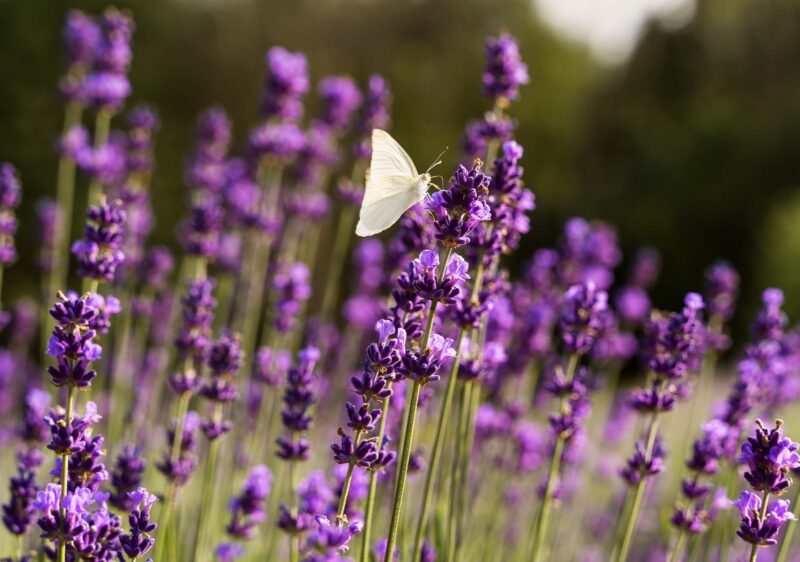
Evergreen shrubs keep the area structured throughout the year, while herbs such as lavender, mint, and jasmine engage the senses through gentle fragrance.
Consider the following plant categories for variety and balance:
- Groundcovers: creeping thyme, moss, sedum
- Shrubs: boxwood, holly, hydrangea
- Flowering plants: roses, daisies, hibiscus
- Herbs: rosemary, basil, lavender
- Trees: maple, birch, olive
Vertical and privacy gardens add height and intimacy to smaller yards. Trellises and pergolas can support climbing vines such as ivy or clematis.
Hanging baskets and green walls offer lush beauty while saving ground space.
Using these layers of greenery naturally divides sections without heavy walls or fences.
A Zen-inspired corner can transform any area into a tranquil retreat.
Sand or rock arrangements paired with minimalist plantings encourage mindfulness and calm.
Small water bowls, bamboo features, or a single bonsai complete the serene atmosphere.
Ensure Comfort with Shade & Shelter
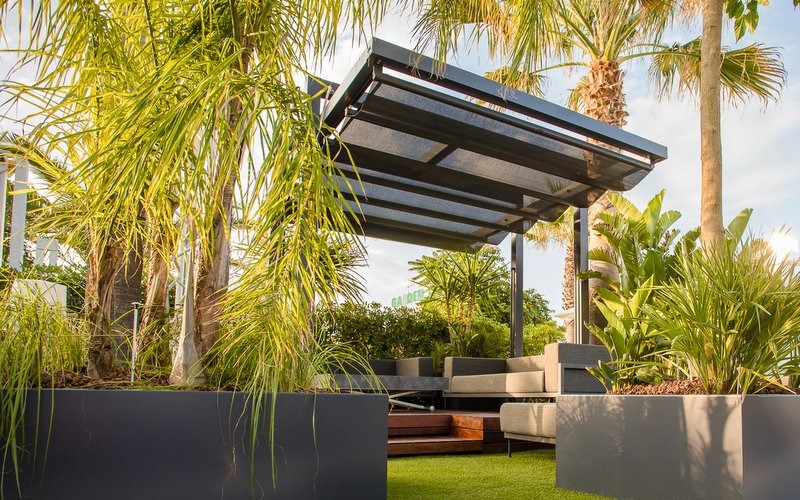
Comfort defines how much time people actually spend outside.
Shade plays an essential role in keeping temperatures pleasant and protecting against harsh sunlight. Pergolas, gazebos, umbrellas, and arched canopies add both style and functionality.
Light curtains or fabric panels can filter sunlight, reduce glare, and create privacy.
When planning for shade, think about how sunlight moves during the day. Combining natural and structural shade ensures flexibility for every activity.
Options include:
- Trees with wide canopies for organic shade
- Pergolas with retractable tops for adjustable coverage
- Patio umbrellas for movable protection
- Fabric sails for modern aesthetics
Weather protection extends outdoor use into cooler or windier seasons. Wind barriers such as glass panels, bamboo fences, or living hedges can block breezes while maintaining visibility.
Retractable screens or sliding panels provide easy adaptability without making the space feel closed.
Creating a combination of sunny and shaded zones allows everyone to choose their comfort level.
When combined with natural materials and greenery, shelters integrate seamlessly with the environment, promoting balance and relaxation.
Furnish for Relaxation
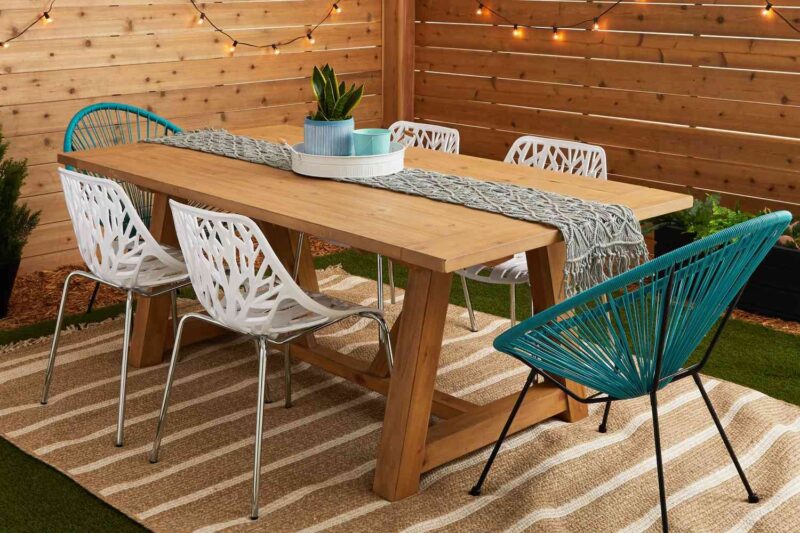
Furniture transforms an outdoor setting into a true living area. Soft, cushioned pieces invite people to unwind and enjoy long afternoons outside.
Lounge chairs, hammocks, daybeds, and sectionals provide versatility for individuals and groups alike.
Weatherproof fabrics resist fading and moisture, keeping the setup looking fresh over time.
Before furnishing, plan what kinds of activities will happen in the space. Include a mix of practical and comfort-oriented furniture such as:
- Lounge chairs and recliners for sunbathing or reading
- Dining tables and chairs for shared meals
- Hammocks or swings for calm relaxation
- Modular sofas for flexible arrangements
- Storage benches for cushions and accessories
Functionality enhances every outdoor experience. Nesting tables offer convenience, while lighting fixtures such as solar lanterns or LED strips improve evening ambiance.
Choosing styles that complement indoor aesthetics creates a sense of continuity.
Adding finishing touches helps make the area feel personal.
Throw pillows, blankets, rugs, or planters can highlight color themes or seasonal decorations.
Every item should balance practicality, durability, and comfort to achieve an inviting atmosphere.
Summary
Creating a relaxing outdoor space relies on purpose, comfort, and natural balance.
Starting small and building gradually allows freedom to experiment and evolve.
Personal touches, chosen with care, make the area feel truly reflective of one’s lifestyle and preferences.
A well-crafted outdoor retreat becomes not just an addition to the home but a peaceful extension of personal well-being.

